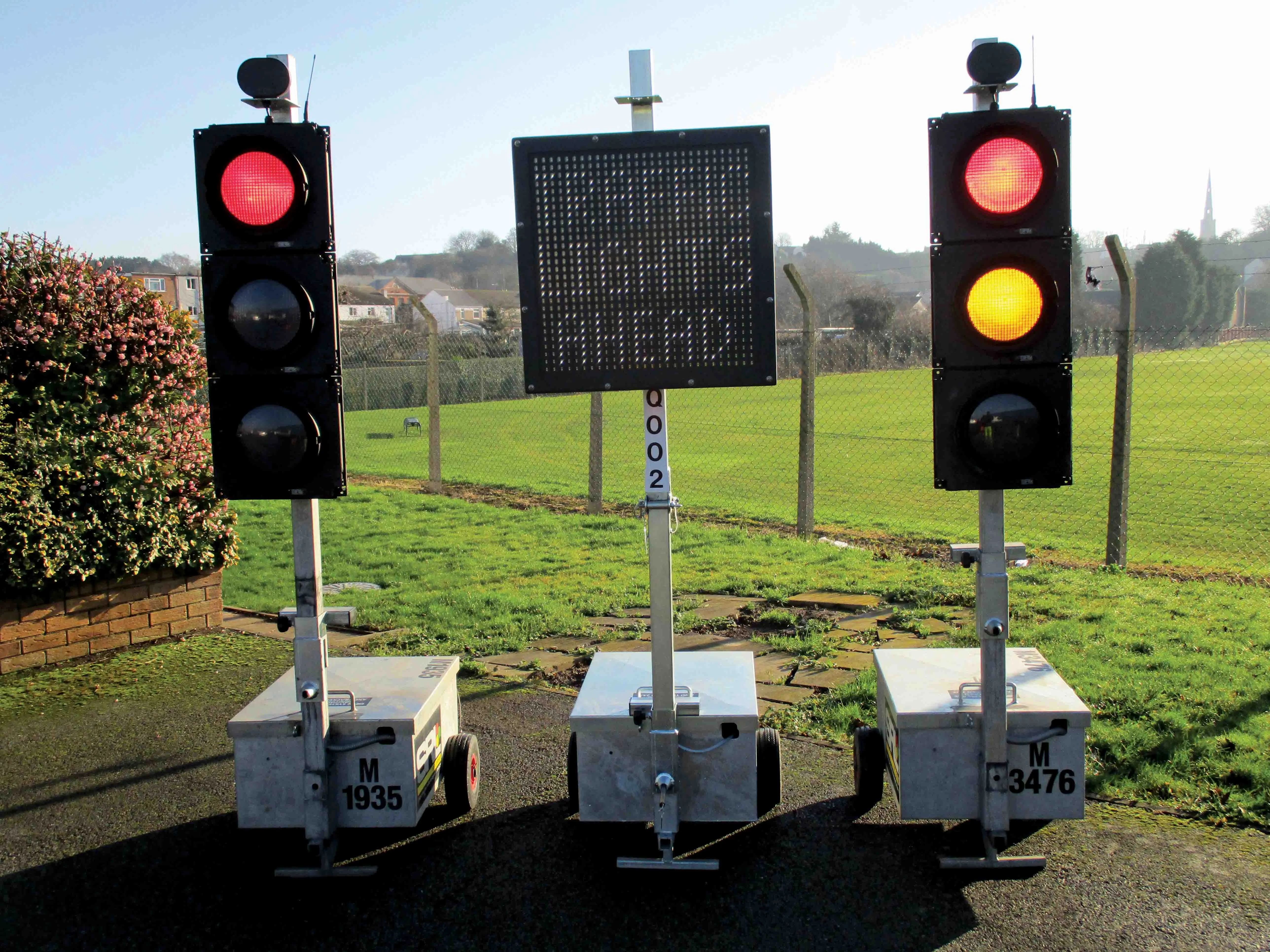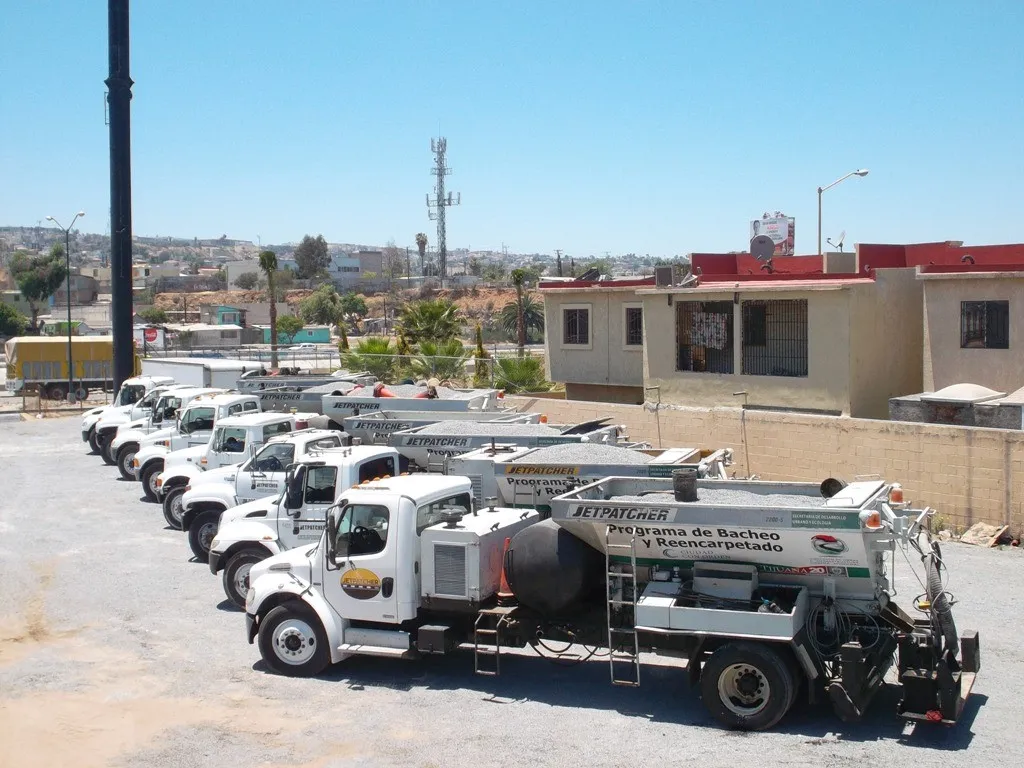Variable message sign manufacturer Bartco UK says it is working with SRL Traffic Systems to create a portable variable message sign (VMS) to be integrated with temporary traffic lights
SRL Traffic Systems approached Bartco UK to create the manufacturer’s smallest VMS, designed to show basic safety information during temporary traffic light installation and road works.
April 7, 2017
Read time: 2 mins

Variable message sign manufacturer Bartco UK says it is working with SRL Traffic Systems to create a portable variable message sign (VMS) to be integrated with temporary traffic lights
SRL Traffic Systems approached Bartco UK to create the manufacturer’s smallest VMS, designed to show basic safety information during temporary traffic light installation and road works.
Measuring 650mm x 750mm, Bartco UK’s HD Quattro is being integrated on the same boxes and posts that SRL uses for its Radiolight temporary traffic lights and powered by their batteries.
The integrated HD Quattro will be a safety and information sign, informing road users of road works being installed and the speed limit. The VMS will also be deployed within work zones to safely manage on-site traffic.
Over the last 12 months, the HD Quattro has also featured in a range of other integrated ITS solutions developed by Bartco UK and its sister company, Mobile Visual Information Systems (MVIS). As part of Auto Detect, it has integrated with a master traffic management unit, which, when triggered by an external device, such as a red light on a traffic signal, activates an appropriate message on the sign.
With the addition of a radar, the HD Quattro can also be used as a speed-activated sign to increase its effectiveness and run times. The HD Quattro has been incorporated in the over-height detection solution within the companies’ Intelligent Safety portfolio.
Developed in partnership with Highways Resource Solutions (HRS), Bartco says that Intelligent Safety was the first collection of temporary road worker safety solutions to integrate modular electronic perimeters and VMS. Last November, Bartco announced a partnership with European ITS manufacturer Signature Group (France). The partnership involves the two companies working together to develop and distribute new ITS technology, such as UK-regulation-compatible versions of Signature MS4 high-resolution VMS and AMI products.
In the same month, Bartco UK broke into the permanent ITS market with the energy-efficient fixed Remote Controlled Temporary Traffic Management Signs (RCTTMS) in the first generation of products designed to comply with new UK government standards.
Bartco UK sells individual monitoring and visual information ITS products and integrated solutions, distributing globally, with the exception of Australia and New Zealand. MVIS works with Bartco UK to create temporary ITS hire solutions, and uses Bartco UK’s portable VMS.
SRL Traffic Systems approached Bartco UK to create the manufacturer’s smallest VMS, designed to show basic safety information during temporary traffic light installation and road works.
Measuring 650mm x 750mm, Bartco UK’s HD Quattro is being integrated on the same boxes and posts that SRL uses for its Radiolight temporary traffic lights and powered by their batteries.
The integrated HD Quattro will be a safety and information sign, informing road users of road works being installed and the speed limit. The VMS will also be deployed within work zones to safely manage on-site traffic.
Over the last 12 months, the HD Quattro has also featured in a range of other integrated ITS solutions developed by Bartco UK and its sister company, Mobile Visual Information Systems (MVIS). As part of Auto Detect, it has integrated with a master traffic management unit, which, when triggered by an external device, such as a red light on a traffic signal, activates an appropriate message on the sign.
With the addition of a radar, the HD Quattro can also be used as a speed-activated sign to increase its effectiveness and run times. The HD Quattro has been incorporated in the over-height detection solution within the companies’ Intelligent Safety portfolio.
Developed in partnership with Highways Resource Solutions (HRS), Bartco says that Intelligent Safety was the first collection of temporary road worker safety solutions to integrate modular electronic perimeters and VMS. Last November, Bartco announced a partnership with European ITS manufacturer Signature Group (France). The partnership involves the two companies working together to develop and distribute new ITS technology, such as UK-regulation-compatible versions of Signature MS4 high-resolution VMS and AMI products.
In the same month, Bartco UK broke into the permanent ITS market with the energy-efficient fixed Remote Controlled Temporary Traffic Management Signs (RCTTMS) in the first generation of products designed to comply with new UK government standards.
Bartco UK sells individual monitoring and visual information ITS products and integrated solutions, distributing globally, with the exception of Australia and New Zealand. MVIS works with Bartco UK to create temporary ITS hire solutions, and uses Bartco UK’s portable VMS.








